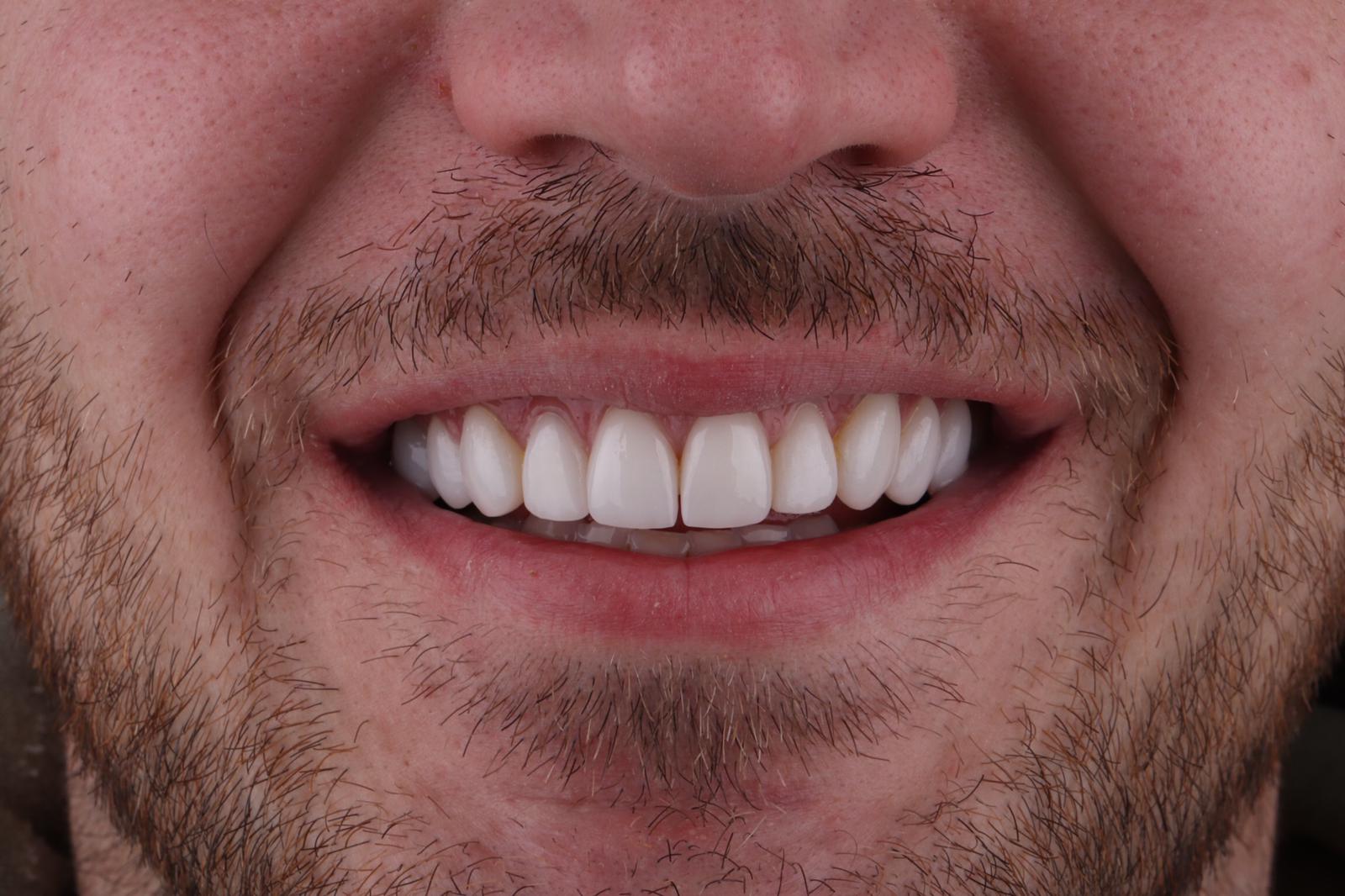 Prosthetics
Prosthetics
Dental bridges
Types of Dental bridges
All-Porcelain Bridge
When dental implants cannot be employed to replace a missing or extracted tooth, then a fixed or permanently cemented dental bridge is the next best solution. These non-removeable tooth replacements can be constructed out of many materials. The design and overall strength of these restorations is evolving quickly. At this time, the most common porcelain varieties (e.g. Zirconium, Procera, E Max) used as substructures or frameworks still have lower flexural strength relative to metallic versions but their popularity is growning rapidly. The restorative dentist and patient must weigh the risk of occlusal forces and abuse against the ease of creating an esthetic result.
Porcelain supported by a metal substructure (PFM) Bridge
When the supporting substructure is placed under unusually heavy loads, veneering porcelain can chip or fracture off of any bridge or crown. Porcelain is like glass; it has a low tensile strength. If there is significant flexure, it will crack, chip, or break. Adding a metallic substructure under the porcelain will reduce flexing under trauma or excessive loads. If the patient is hard on their dentition with clenching or grinding, it is advisable to support the superficial veneering layer of ceramic with some sort of metal substructure. There are many types of metallic substructures which can be added when maximum strength is needed.
Dental crowns
Dental crowns are restorations that protect damaged, cracked or broken down teeth. A crown strengthens your existing, damaged tooth so as to preserve its functionality.
Why might you need crowns?
If your tooth has undergone significant decay and there is not enough tooth structure remaining to support a filling or an inlay and maintain functionaility.
If you have a large cavity and opt for the additional protection a crown offers to your tooth over a large composite filling or an inlay.
If you have had a dental implant to replace a missing tooth, a crown will be fitted to the abutment of the titanium implant.
Following root canal treatment, a crown is often needed to strengthen the tooth.
If you grind your teeth and have a poor diet, acid errosion may reduce your teeth to a point where the only option available is to crown them.
What materials can crowns be made from?
In modern-day dentistry there is a wide variety of dental materials to choose from. Some crowns are made from full gold, where as others are made from an alloy of metals fused to a porcelain outer shell. After time, crowns that are made from a combination of metal fused to porcelain can begin to show dark gum lines that are not aesthetically attractive. All-porcelain or – ceramic crowns are the best choice for a natural cosmetic look. There are many different brands and types of porcelain crowns, and the variation between the costs of dental crowns at different dental practices may well reflect the quality of the materials used.
How long do crowns last?
This will depend largely on how well you look after your teeth. Dental crowns require the same level of care and attention as your natural teeth. Provided you have a good oral hygiene program, attend regular checkups at your dentist, don’t grind your teeth, maintain a tooth-kind diet and don’t do things like open beer bottles with your teeth, a high-quality dental crown can last 10-15 years.
Veneers
A veneer is a thin layer of porcelain made to fit over the front surface of a tooth, like a false fingernail fits over a nail. Sometimes a natural colour ‘composite’ material is used instead of porcelain.
Veneers can improve the colour, shape and position of your teeth. A precise shade of porcelain can be chosen to give the right colour to improve a single discoloured tooth or to lighten the front teeth. A veneer can make a chipped tooth look intact again. The porcelain covers the whole of the front of the tooth with a thicker section replacing the broken part. Veneers can also be used to close small gaps, when orthodontics (braces) are not suitable. If one tooth is slightly out of position, a veneer can sometimes be fitted to bring it into line with the others. Veneers make teeth look natural and healthy. Because they are very thin and are held in place by a special strong bond (rather like super-glue) very little preparation of the tooth is needed.
The two most common materials used to fabricate or create dental veneers are composite resin and porcelain. Indirect (created outside of your mouth) porcelain veneers and composite veneers are made by a dental technician in a dental laboratory; direct (created directly on your teeth) composite veneers are made by your dentist during your appointment at the our office.
Porcelain dental veneers
Porcelain dental veneers are more appropriate solutions for severe cases involving dullness, wear, discoloration, extensive chipping, cracking, spacing or uneven teeth.
Composite bonding
Composite bonding or just bonding – which refers to direct composite veneers – is an inexpensive, effective and minimally invasive way to restore and correct small chips, cracks and discoloration in the teeth.
Naši radovi
Sjajni rezultati koji dovode do potpunog preobražaja osmeha
Fasete





Kompletna rehabilitacija gornje i donje vilice sa postavljenjem bezmetalnih krunica

Kompletna rehabilitacija gornje i donje vilice sa postavljenjem bezmetalnih krunica



Metalokeramičke krunice



Postavljanje faseta



Bezmetalne krunice



Viniri



